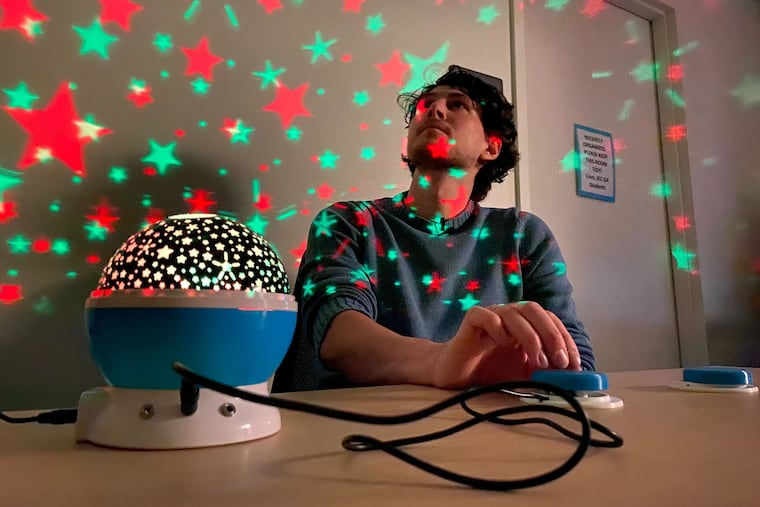Tiny buttons on toys can be hard for children with disabilities. These Jefferson students learned a better way.
Occupational therapy students customized toys with specs from the nonprofit Makers Making Change, then gave them to Temple University's TechOWL program for distribution.

The dome-shaped lantern projects a rotating array of colorful stars on the walls and ceiling, promising hours of fun with the press of a button.
But the buttons are small and require a fair amount of force, making the toy all but useless for some children with disabilities.
That was the challenge that Zach Samalonis posed to his class of occupational therapy students Wednesday at Thomas Jefferson University.
“This toy is hard for someone with low dexterity,” he said.
The solution: Take the lantern apart and connect it to large, 3D-printed buttons that can be activated with barely a flick of the fingers.
Samalonis spent more than an hour guiding his students through the process of customizing the lanterns, using open-source plans from Makers Making Change, a nonprofit based in British Columbia. The modified toys were then turned over to representatives from TechOWL, an assistive technology program at Temple University, for distribution to children in the Philadelphia area.
During the course of earning their two-year masters’ degree, the Jefferson students have learned how to help patients use a wide array of assistive devices.
But actually making such a device? That was a new twist for several members of the class on Wednesday, among them Tynesa McArthur.
“I’m not an engineer, so this is cool,” she said.
She and her classmates each took apart a lantern and carefully drilled holes through the outer plastic shells to accommodate three electrical jacks. They wired the jacks to the circuit board inside each lantern, then connected the jacks to three external buttons the size of jar lids.
This is the second year that Samalonis, an adjunct professor at Jefferson’s College of Rehabilitation Sciences, has assigned the project to his students, just in time for the holidays.
He made the buttons in advance on a 3D printer. He is handy with tools, as he has an industrial design degree from Jefferson, where he won an award in 2021 for co-inventing a prosthetic foot for surfers.
On Wednesday, he strode about the Walnut Street classroom on Jefferson’s Center City campus, patiently showing students where to position their drill holes and how to attach the new wiring.
The students connected the wires for the big, new buttons in such a way that the lanterns’ small, original buttons would still work.
But the big buttons were the clear winner, class member Kay Waltz said. The colorful plastic discs are easy and fun to press for anyone, regardless of their dexterity and strength.
“It’s very satisfying, the texture and the sound of it,” she said.